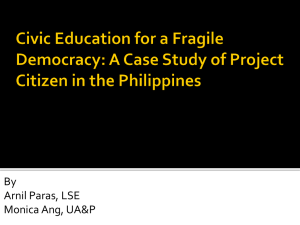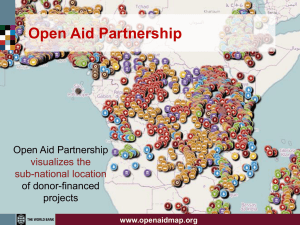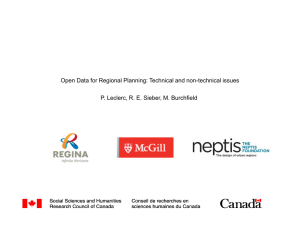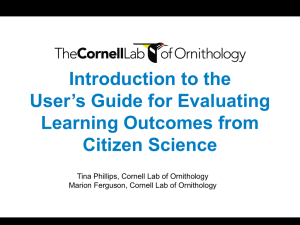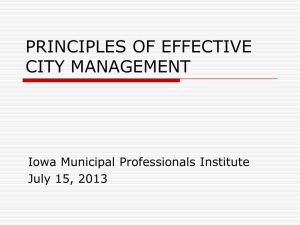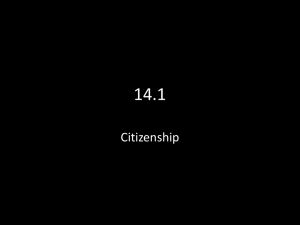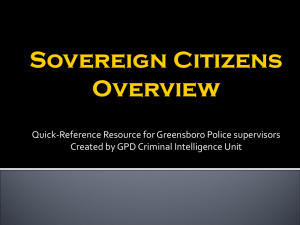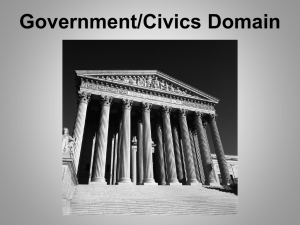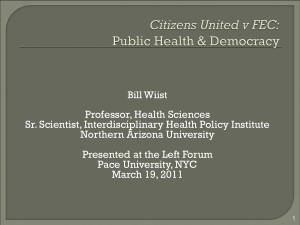Citizen Centric eGovernment, The Dutch Aproach
advertisement
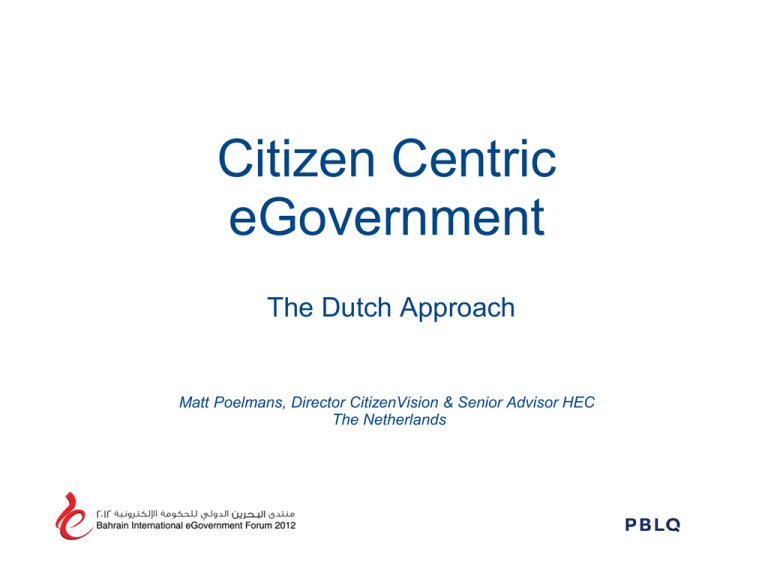
Citizen Centric eGovernment The Dutch Approach Matt Poelmans, Director CitizenVision & Senior Advisor HEC The Netherlands Outline Electronic Government Public Sector Innovation & Digitizing Engagement Model Quality, Satisfaction, Participation Collaborative Governance Borderless Cooperation & Sharing Success Factors Interoperability, Strategy & Institutions Electronic Government Aimed at Efficiency and Cost Reduction Building the Digital Highway: Access: Contact Centre, My Page, Web Guidelines Identification: eID, Citizen Service Number Common Registers: Persons, Houses, Cars, etc. Exchange: Secure Networks, Interoperability Framework Supply Oriented and Focussed on Service Delivery Citizen as a Passive Consumer Collaborative Governance Aimed at Quality and Participation Using the Virtual Infrastructure: Mobile Technology Open Data Cloud Computing Social Media Shift to Demand Orientation and Interaction Citizen as an Active Co-Producer An Inconvenient eTruth Each Public Organization does its Utmost However, Insufficient Take Up Reason: Reinventing the Wheel Lack of Standardization and Cooperation How to Think & Act from the Citizen's Perspective? Citizen Awareness Requires Paradigm Shift “ICTU” Construction Model Public Foundation for Jointly Funded eProjects Task Designing & Building Basic Infrastructure Board Representing all Levels of Government Staff is Mixture of Experts and Civil Servants Deliveries are Generic Components & Standards “Burgerlink” Engagement Model Merging Public Sector Reform & Civil Society Innovation Success Dependent on Mutual Benefits “Burgerlink” 3-step Engagement Model: Define Quality Requirements Measure Citizen Satisfaction Facilitate Citizen Participation 1. Quality Requirements 10 Quality Requirements for Public Performance Stating Rights of Citizens & Obligations of Government Covering Information, Transaction, Participation Not Mandatory, but Adopted as a Standard Basis for Measurement of Citizen Satisfaction Incentive for Business Process Redesign Translated in 22 languages e-Citizen Charter 1. Choice of Channel 2. Transparency Public Sector 3. Overview of Rights and Duties 4. Personalised information 5. Convenient Services 6. Comprehensive Procedures 7. Trust & Reliability 8. Considerate Administration 9. Accountability & Benchmarking 10. Involvement & Empowerment 2. Citizen Satisfaction Evaluation by Citizens how 55 Life Events are being served Actual Experience in Real Contacts e-Citizen Charter as Criterion for Evaluation Discovers Delivery Chain Deficiencies Lack of Communication and Coordination Prority Matrix helps to select Solutions Customer Journey Mapping to Implement eValuation Criteria I could choose the contact channel myself I knew where to apply for information or help I was informed about my rights & obligations I got personaized information I coud supply my data once I could track & trace the process My data were handled confidentially My complaints were taken seriously I could compare & rate the quality of services I was given alternative solutions to my problem Priority Matrix Citizen Satisfaction 3. Citizen Participation Involve Citizens in Improving Service Delivery, Civil Society & Public Policy Mixed Feelings about One-sided (e)Participation Web 2.0 Tools Promise Better Results Social Media: LinkedIn, Facebook, Twitter, ........... Create Platform & Accomodate Interaction Combine Representative & Participative Democracy Cases eParticipation Information: Crisis Communication Agenda Setting: Petitions, European Citizen's Initiative Monitoring: Track Your Council Comparing: Choose Better Rating: We Evaluate Getting Support: Webcare Co-Production: Improve Your Neighborhood Crowd Sourcing: Breda Tomorrow, Rotterdam Idea Using Open Data: Apps for Amsterdam Communities: Civil Servant 2.0, Citizenlink, Pleio Webcare Listening to Customers: Answering Questions, Solving Problems, Collecting Ideas Goals: Improvement of Service Delivery & Reputation Management Responsibility: Customer Contact Centre & Information Department Connect with Self Help Customer Support Fora Management Formal Complaints & Objections Best Practices: Job Search(UWV), Customer Care (KLM) Process Redesign The Necessary but Hard Task Consolidating & Embedding Project Reversing existing Procedures Introducing Cloudcomputing, New Way of Working Involving Customers via Social Media Solution can be an App! Citizen is Begin User, not End User Citizenvision 2.0 New Rules of Engagement: Channel: Website no longer default Channel, substituted by Platforms for permanent Interaction Information: Apart from Providing Information, Public Sector Data will be Released for New Usage Transaction: Apart from Delivering Standard Services, Third Parties will Provide Solutions Participation: One way Initiatives under Conditions set by Government will be supplemented by Interaction initiated by Civil Society Collaboration: Cross Border Cooperaton & Sharing Information becomes easier via Social Media & Cloud Computing Collaborative Governance Creating a Collaborative Governance Model for: Reforming Public Sector: Integrating Participative Democracy in Service Delivery & Policy Development Solving Debt Crisis: Rallying Support for Innovative Change & Austerity Measures Fighting Against Corruption: Requires Enhancing Transparency & Social Accountability Success Factors Interoperability Framework: NORA Integrated Strategy: NUP Institutional Collaboration: ICTU Citizen Focus: Citizenlink Links www.hec.nl www.burgerlink.nl www.mattpoelmans.nl www.citizenvision.nl www.twitter.com/burgermatt

